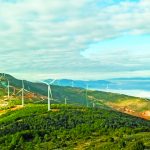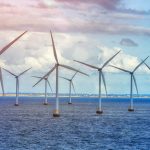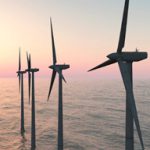The wind sector offers a huge opportunity for the U.K. to become a global leader in wind turbine blade recycling if a cross-industry approach is taken, according to the Energy Transition Alliance, a collaboration between the Net Zero Technology Centre and Offshore Renewable Energy (ORE) Catapult.
The alliance’s report highlighted that around 14,000 wind turbine blades are expected to reach the end of their usable life within the next three years. By 2023, an estimate of up to 50,000 tons of composite material could be recovered and recycled for a variety of re-use applications. By driving forward a better understanding of the circular economy, the possibility of disposal in landfill or incineration can be avoided and liability reduced.

Technology Centre)
While there has been significant investment within the renewable energy sector to improve installation, operations and maintenance, the focus is shifting to sustainable end-of-life management as the first offshore wind farms approach decommissioning in the next 10 years.
Over the next three decades the industry faces significant growth in the scale of turbines expected to be decommissioned. Solutions are being sought for lifetime extension and more sustainable end-of-life management, such as repowering and circular economy practices.
This new report identifies five areas that the sector must address to achieve a more circular economic model: Encouraging use of materials more compatible to recycling; developing processes that allow cheaper, easier recover of materials during decommissioning; creating pilot projects industry-wide for new recycling methods and technologies; establishing a supply chain for recycled material; and educating the marketplace about opportunities for wind turbines’ recycled materials.
“The report illustrates what can be achieved in this industry if we can develop a collaborative approach that involves all sectors striving for sustainable decommissioning. With input from manufacturers through to end users, we can reinvent how wind turbines are recycled,” said Pamela Lomoro, project manager at the Net Zero Technology Centre.
While wind turbines are widely expected to be up to 90 per cent recyclable, the blades, which are made from composite layers of stiff carbon or glass fibers in a resin matrix, are notoriously challenging to reclaim and reprocess, and remain the most significant hurdle to achieving full wind turbine recyclability.
“The innovation challenge to create a circular economy within the wind industry is vast, but hugely exciting. This is a significant opportunity for the supply chain, given the huge volume of decommissioning and industry expansion ahead,” said Lorna Bennet, ORE Catapult project lead.
“The best solution is likely to come from a multi-sector approach because of the economies of scale required to create a market for recycled material. Likewise, the drive for better practices in recycling techniques and to develop better research and technologies will come from innovation and cross-industry collaboration,” Bennet said.
More info www.netzerotc.com





































